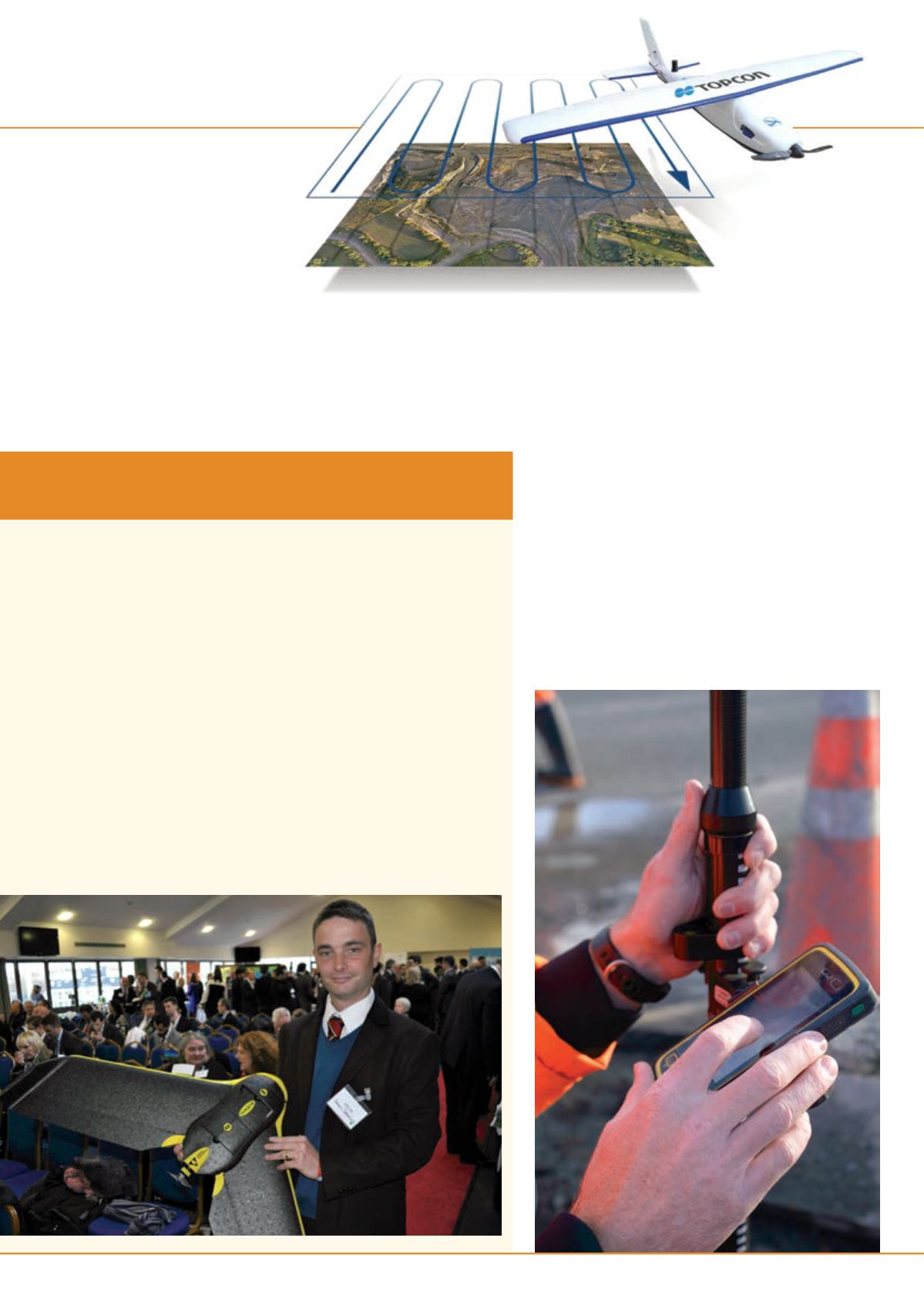
international
construction
october 2014
SURVEYING
36
Technology uptake
>
S
eizing the opportunity tomake themost of a growing commercial interest in drone
surveying has proved a shrewdmove for the team behindAtec-3D.
The Kent, UK company has developed a business using drones for surveying and is
steadily building a client-base for its advanced services.
Since setting up two years ago, it has taken on a range of challenges – from surveying
commercial premises, forests and coastal areas, to commissions inNorthAfrica and a
topographical survey of a plannedmine inNewBrunswick, Canada.
Atec-3D’s co-director Chris Slee explained it had been hardwork to gain permission from
aviation authorities for commercial drone flights. However, he believed the preparation time
had beenwell worth the effort for their small team.
He said, “There has been a growing interest in our work over the past couple of years. One
of the biggest issues that companies have to consider now is levels of risk – so they are now
able to reduce that by employing drones to do surveyingwork, which can also save them
money.
“People are now starting to realise that drones are not just things that are used for spying
and that they have some really useful applications.
“We’ve used our fixedwing system Ebee drone for a number of projects now including a
mine inSouthWales (UK) and also for amapping a site for a antimonymetal mine inCanada.
But it can also be used formany other things including examiningwind turbines, power lines
and other areas that are hard to access.”
Surveying our skies
Topographical drone surveys are proving a success for UK company
surveying stations robotic stations that have seen a tremendous
increase in use.”
He added that the use of BIM processes in the design phase
of 3Dmapping of sites through computer aided design (CAD)
with the company’s own own Cyclone laser scanning software
module, during construction has become increasingly common
for larger-scale projects.
This was especially the case, he said, given its potential to
reduce physical waste on a site through accurately gauging
physical requirements for a site.
While it remains a growing trend, just how challenging has it
been to design software and equipment that assists the flow of
work and exchange of BIM information between designers and
siteworkers?
“Communicating information between the design stage and
the site is clearly one of the biggest challenges that companies
face. Sowe try and help in designing products that have people
in their comfort zones – we are not trying to change the way
people actuallywork, just alter theirmethods.
“We’ve done this by getting involved with a number of user
groups and getting feedback from people in the industry.
“We have found that it is largely those working on bigger
contracts that are using BIM data in the design phase and we
Topcon released
its own surveying
drones, the
Sirius Pro and
Sirius Basic this
summer.
Trimble’sM2PP
is just one of its
digital surveying
devices used for
work on an
18 km stretch of
highway at the
Kapiti Cost, New
Zealand.
In his opinion, it was this youthful set of
clients that had driven demand for greater
usage of technology in building tasks, which
shows no sign of slowing down.
Moeller said, “This has been a busy year
for us, working with customers in order to
fulfill their expectations. Our goal is to find
solutions that drive efficiencies and products that work well in
the field.
“Over the last 5 or 10 years there have been some big changes
in terms of digital equipment being used in construction and
we are working hard as a company to improve the efficiency of
our products.
“There is a lot of competition in the construction industry
now and contracts may be awarded to those who are using
the new technology. There is so much out there such as total


